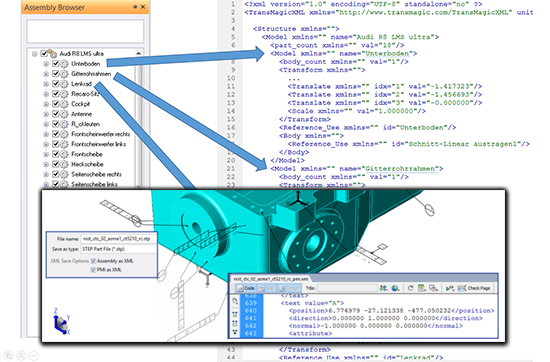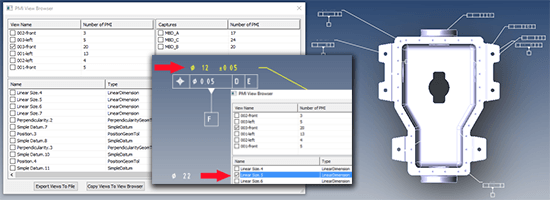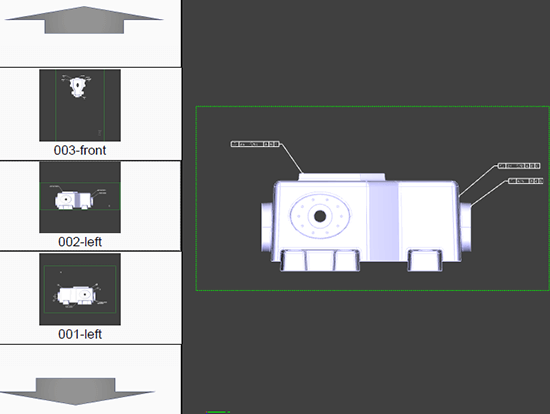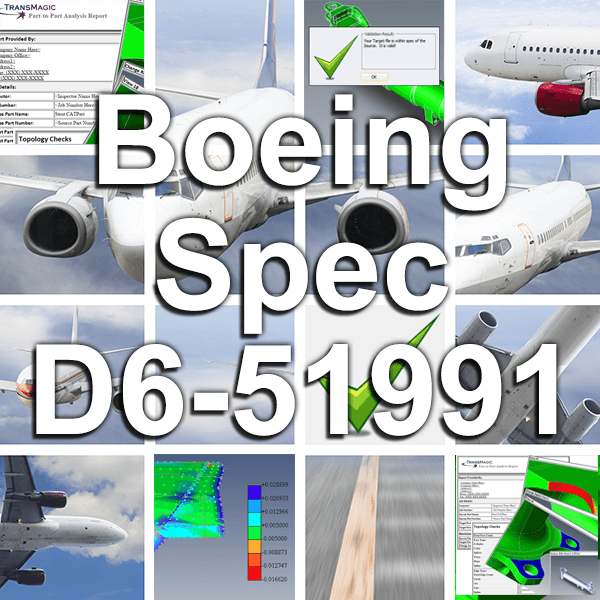
Last week we overviewed the advantages TransMagic can give aerospace manufacturers who need to comply with the AS9100 standard. This week we dig into Boeing spec D6-51991. Part 2 of this article covers Boeing D6 Spec Translations; if you need information on Aerospace Standard 9100, see the AS9100 article here.
Boeing maintains strict standards for CAD geometry used for their design and manufacturing processes; if you are a supplier to Boeing, or a sub-tier supplier to Boeing, you may be subject to requirements of Boeing Spec D6-51991, which consolidates and replaces several previous requirements.
This post will focus on section 7.5 of the spec, ‘Information Extraction’, and offer some solutions for those requirements; the upcoming part 2 of this article will look at section 8.2, ‘Translations’.
See a quick overview of PMI and information extraction capabilities in the video below:
Model Based Definition
Information Extraction
D6-51991 7.5 Suppliers who receive Engineering and/or Tooling MBD datasets must extract information from the dataset sufficient for manufacturing and inspection activity for the product. Additionally, utilizing MBD requires a capability assessment by a Boeing Supplier Quality DPD representative.
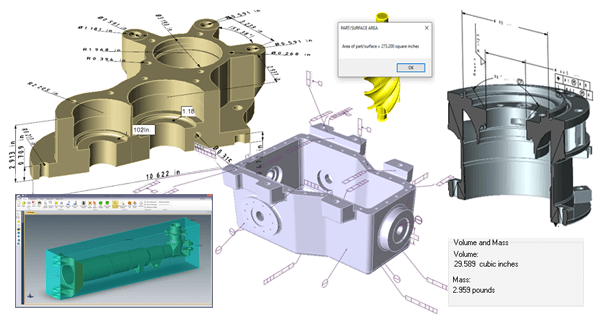
Figure 1 – Information extraction; examples shown for PMI, PMI sections, dimensions, bounding box, surface area and mass properties.
PMI and other dimensions
Solution: In short, all design requirements in a given design must be identified for inspection and validation. Again, identifying PMI data (notes, GD&T and dimensions), interrogating the solid, measuring and even extracting data in XML format is possible with TransMagic products. In figure 2 you can see part data extracted to XML, and in the inset, PMI data; mass properties data is also available. Part, mass properties and PMI XML extraction gives you a powerful window into your customer models and assemblies which can be used not only build reports and processes for the D6 spec, but to spot trends and further optimize manufacturing processes. The PMI View Browser: Figure 3 captures some of the functionality of the PMI View Browser, which allows the user to access PMI per view, neatly untangling the rat’s nest of GD&T which typically covers a complex part. In figure 3 you can see there are six possible views which correspond to the orientation of the PMI, each with their own GD&T; in the inset, note that if one of those values is selected, it highlights yellow and zooms in the browser. PMI View Browser data can be saved out to PDF (see next figure). Extracted PMI Views: The PMI View Browser will also allow users to save out the entire model and PMI data as a 3D PDF, with any selected views; in figure 4, note that three views have been captured in this 3D PDF document. Click on any view to activate it, or use the mouse to rotate or zoom the 3D model into any orientation or position.D6-51991 7.5.1 Supplier’s QA must verify that all design implicit and explicit requirements (e.g., all features defined by GD&T, annotations, specifications, notes and other specified requirements in the authority MBD dataset and associated parts list including dimensional and other properties) are identified and planned for inspection/validation.
Part 2 of this post is now complete, where we look at the ‘translations’ component of D6-51991, specifically section 8.2. Also please note informational link below.
Find a copy of Boeing Spec D6-51991 here.
If you have any questions or comments, email us at social@transmagic.com.

